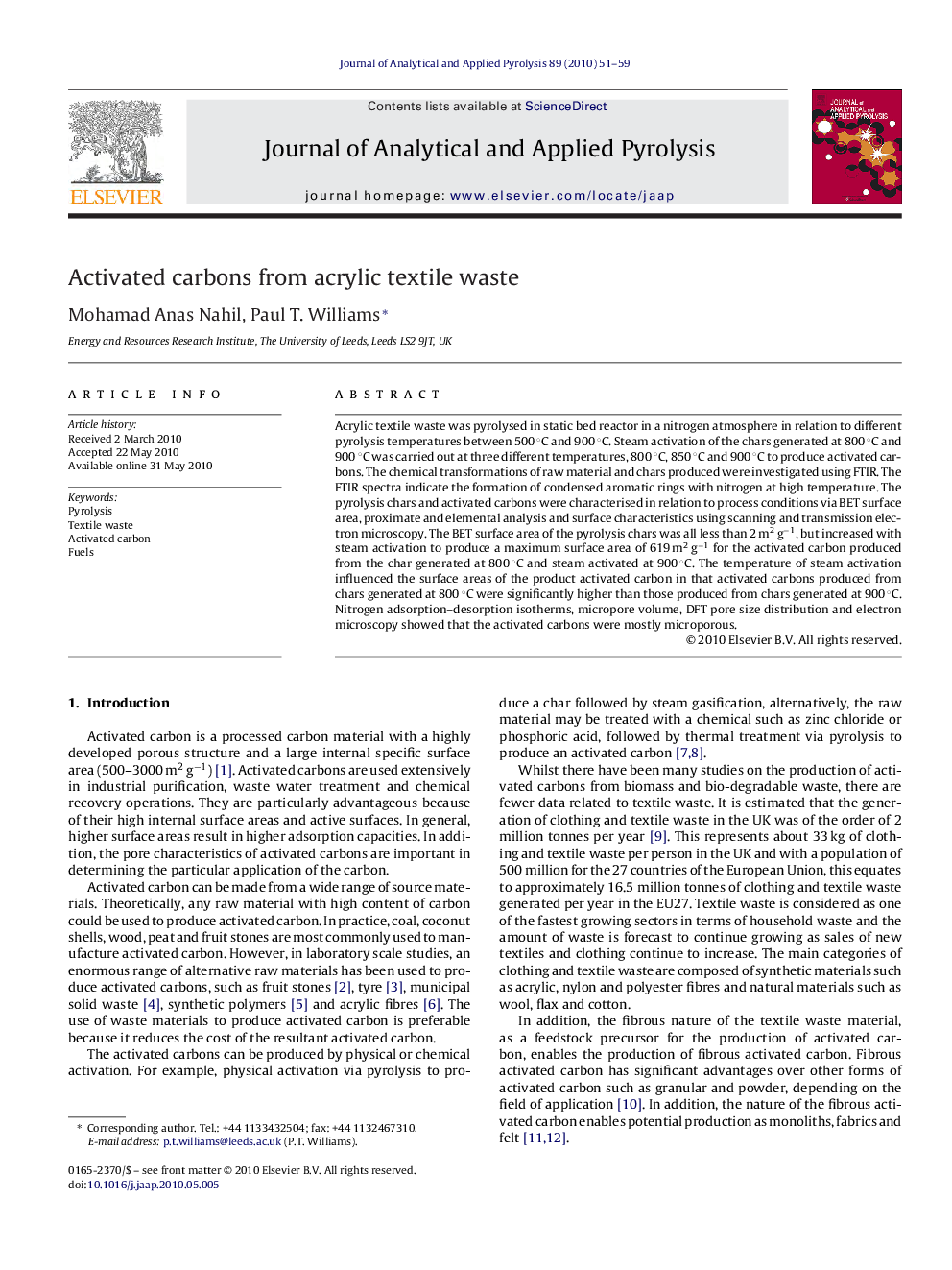| Article ID | Journal | Published Year | Pages | File Type |
|---|---|---|---|---|
| 1197054 | Journal of Analytical and Applied Pyrolysis | 2010 | 9 Pages |
Acrylic textile waste was pyrolysed in static bed reactor in a nitrogen atmosphere in relation to different pyrolysis temperatures between 500 °C and 900 °C. Steam activation of the chars generated at 800 °C and 900 °C was carried out at three different temperatures, 800 °C, 850 °C and 900 °C to produce activated carbons. The chemical transformations of raw material and chars produced were investigated using FTIR. The FTIR spectra indicate the formation of condensed aromatic rings with nitrogen at high temperature. The pyrolysis chars and activated carbons were characterised in relation to process conditions via BET surface area, proximate and elemental analysis and surface characteristics using scanning and transmission electron microscopy. The BET surface area of the pyrolysis chars was all less than 2 m2 g−1, but increased with steam activation to produce a maximum surface area of 619 m2 g−1 for the activated carbon produced from the char generated at 800 °C and steam activated at 900 °C. The temperature of steam activation influenced the surface areas of the product activated carbon in that activated carbons produced from chars generated at 800 °C were significantly higher than those produced from chars generated at 900 °C. Nitrogen adsorption–desorption isotherms, micropore volume, DFT pore size distribution and electron microscopy showed that the activated carbons were mostly microporous.
